It’s difficult to run out of things to do in Seoul, but sometimes we just need a change in scenery, away from the urban hustle and bustle. South Korea is the Land of Morning Calm after all, and you haven’t seen it all till you’ve stood breathless on the peak of a snow-capped mountain, revelling in the peaceful serenity.
Just a few hours east lies the temptingly vast, untamed terrain of Gangwon province – here’s how you can discover the best of its rugged charm with this essential two-day itinerary!
Day 1: Pyeongchang
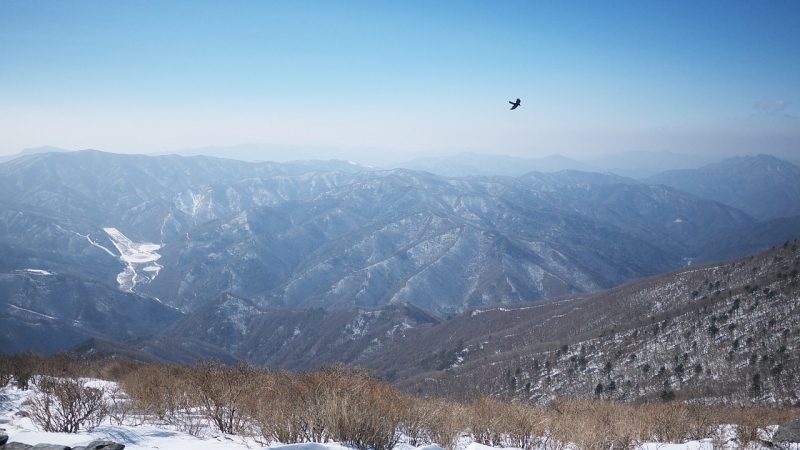
Image credit: Superstarman
Your adventure begins in Pyeongchang, a stunning county with over 80% of its territory adorned with mountains, aptly nicknamed the “Alps of Korea”. As the host of the 2018 Winter Olympics and Winter Paralympics, the region is renowned for its winter sports, but there’s plenty more to be experienced here!
Set your alarm clocks for an early start; the journey from Seoul to Pyeongchang can take up to 3.5 hours. As you escape from the concrete jungle, you’ll watch the landscape transform from a maze of high-rise buildings into the rugged, natural beauty of the countryside and the gorgeous mountains of the Baekdudaegan Mountain Range.
Feed the flock at Daegwallyeong Sheep Farm
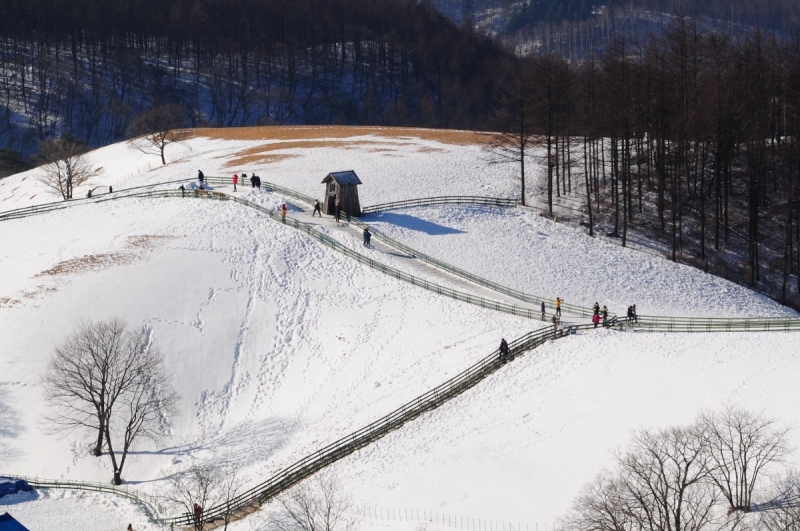
Image credit: Daegwallyeong Sheep Farm
The very best of the rural countryside can be found at the locally-owned Daegwallyeong Sheep Farm. Take a peaceful stroll along the perimeter of the ranch, soaking in the majestic scenery of natural ridges and rolling hills blanketed by snow.
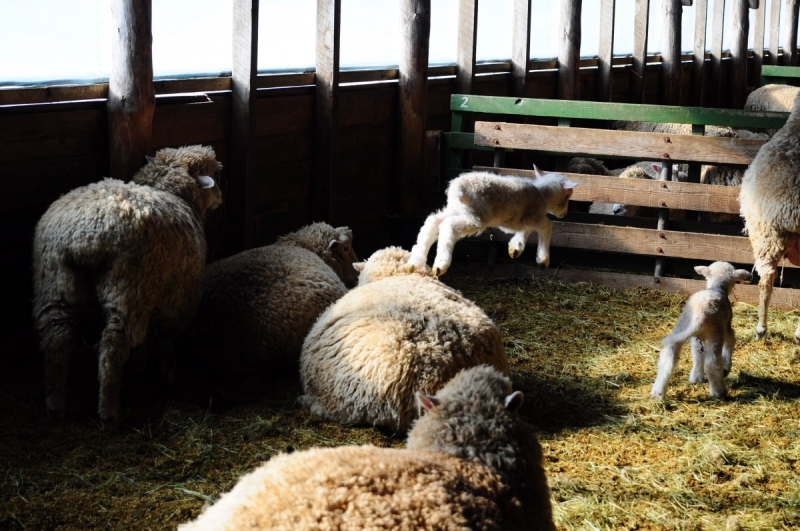
Image credit: Daegwallyeong Sheep Farm
The woolly flock takes shelter indoors during winter and are hungry for hay! Fortunately, you’ll be able feed these cute, fluffy animals and maybe give them a warm hug. Don’t you just want to bring one of those adorable lambs home?
Getting there: From Dong Seoul Bus Terminal, take an intercity bus to Hoenggye Intercity Bus Terminal. From Hoenggye, take a taxi to the farm (about ₩9,000).
Entry fee: ₩4,000 adults (ages 20-64); ₩3,500 children (ages 6-19). Free admission for children ages 5 or under.
Address: 483-32, Daegwallyeongmaru-gil, Pyeongchang-gun, Gangwon-do
Opening Hours: 09:00 to 17:00 from Nov – Feb; 09:00 to 17:30 for Mar & Oct; 09:00 to 18:00 for Apr & Sep; 09:00 to 18:00 from May to Aug
Website: http://www.yangtte.co.kr/
Get an authentic taste of hwangtae
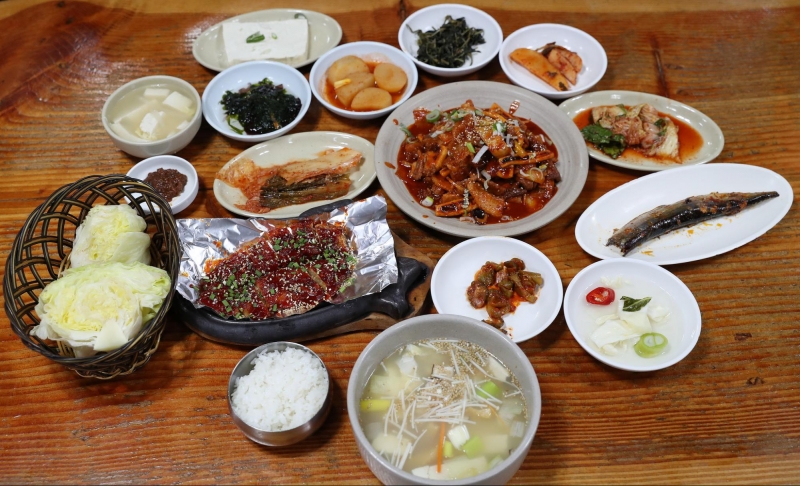
Image credit: Republic of Korea
Pyeongchang is well-known for its excellent hwangtae (dried pollock), a light golden fish tenderised in a lengthy freeze-thaw process. In particular, Daegwallyeong’s cold and windy climate creates ideal conditions for the freeze-drying process and produces premium hwangtae with an extra-tender texture.
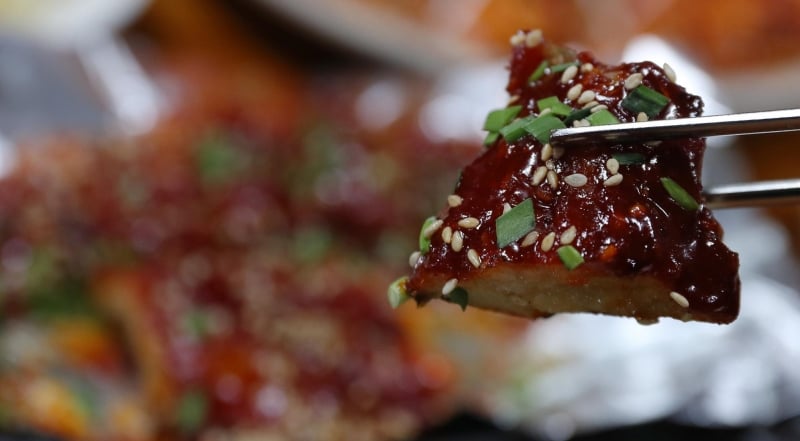
Image credit: Republic of Korea
For an authentic taste of this delicious fish, seek out Hwangtae Hoegwan, which serves hwangtae in a variety of styles. The best way to enjoy this national delicacy on a chilly winter morning is probably through hwangtae jeongol, a hotpot that will bring out the pure taste of the fish. A delightful combination together with mushrooms and vegetables, it’s so tasty and said to be a cure for hangovers. The restaurant also serves steamed or grilled hwangtae, served with gochujang (red chilli paste).
Getting there: From Daegwallyeong Sheep Farm, drive or take a taxi directly to the restaurant, located in the nearby town Daegwallyeong-myeon.
Price: Varies from ₩8,000 to ₩30,000 per dish.
Address: 348-4, Hoenggye 9-ri, Daegwallyeong-myeon, Pyeongchang-gun, Gangwon-do
Opening Hours: 07:00 to 22:00 daily.
Hit the slopes of Yongpyong Ski Resort

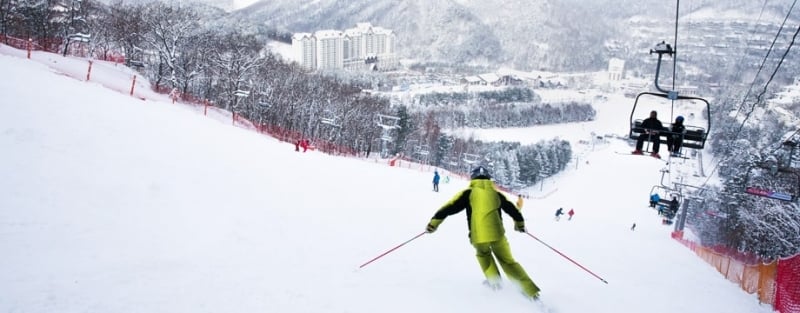
Image credit: Kalatpadai (top), Yongpyong Resort (bottom)
After lunch, head over to Yongpyong Resort, Korea’s largest ski and snowboard resort. Inside its sprawling 4,300-acre grounds, you’ll find 28 open slopes, a 45-hole golf course, karaoke rooms, a bowling alley, sauna rooms and more!
Naturally, skiing and snowboarding are the classic crowd-pleasers at the resort. Here’s your chance to hone your skills on one of the slopes – whether you’ve been inspired by Chloe Kim to lace up your first pair of snowboarding boots, or waiting for your own Ester Ledecká moment!
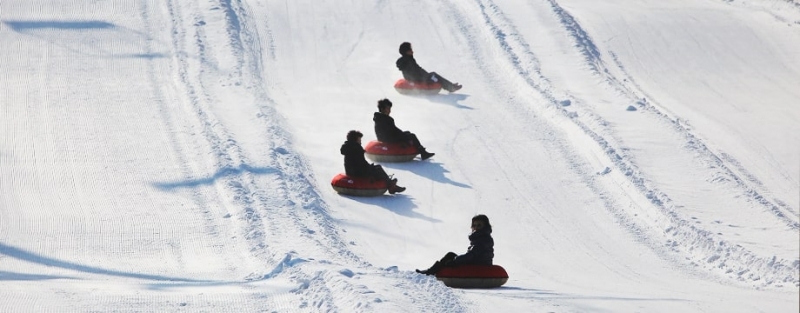
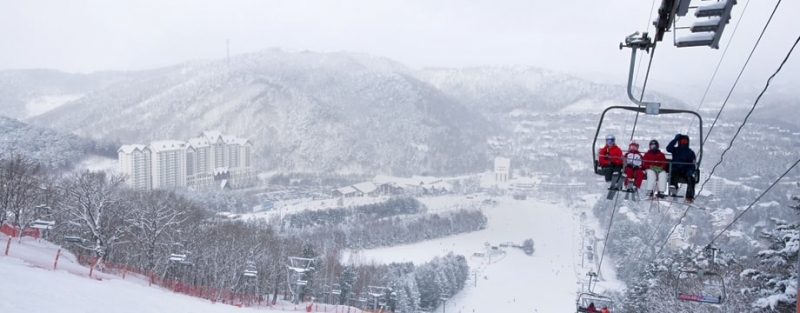
Image credit: Yongpyong Resort
If you’re travelling with family, try sledding down the 200m-wide Sledding Slope, steering a luge in the snow (it’s a real Olympic sport!), or whooshing down the slopes via zip line.
If you’re not keen on winter sports, it’s still worth taking the Mt. Balwangsan Cable Car tour for a breathtaking panorama of the Taebaek Mountains, from nearly 1,500 metres above sea level. The memory of breathing in the cool mountain air while floating over treetops freshly dusted with snow will be unforgettable!
Getting there: Drive or take a taxi from Hwangtae Hoegwan to Yongpyong Resort (about 15min). Alternatively, shuttle bus services are available departing from Hoenggye Bus Station and Daegwallyeong Sheep Farm.
Entry fee: Prices vary by activity. ₩59,000 adults; ₩48,000 children for a half-day ski pass, valid from 08:30am to 12:30pm.
Address: 715, Olympic-ro, Daegwanryeong-myeon, Pyeongchang-gun, Gangwon-do
Opening Hours: Varies by activity; most are available 09:00 to 18:00. Ski season is mid-November to early-April.
Website: https://www.yongpyong.co.kr/eng/index.do
Sizzle up the king of KBBQ meats
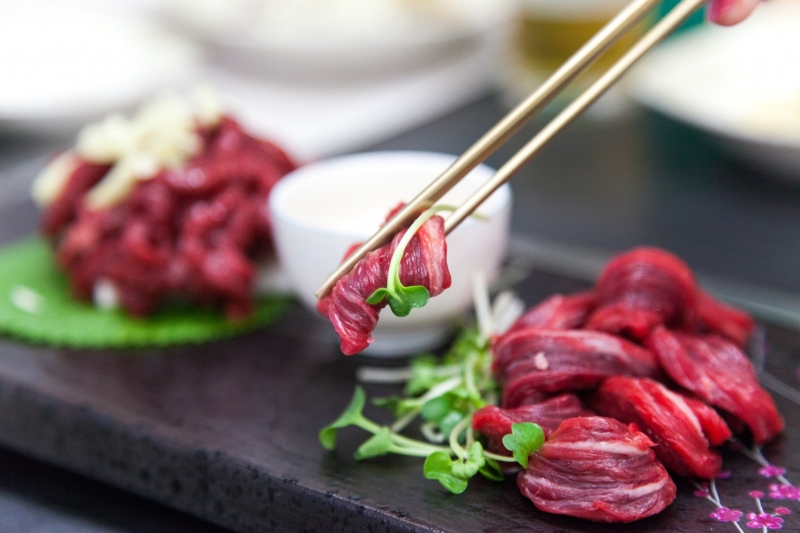
Image credit: Daegwallyeong Hanwoo Town
After a whole afternoon of shredding up the slopes, you’re probably famished. It would almost be a crime to leave Pyeongchang without a taste of hanwoo, the locally-bred premium Korean beef, with a quality on par with Japanese wagyu.
Amongst the multitude of Korean barbecue restaurants in the region, Daegwallyeong Hanwoo Town is popular amongst both locals and visitors for the freshness and quality of its home-grown beef. You’ll get to choose the cuts you want from the on-site butcher, before taking it to the restaurant next door to barbecue the meats yourself!
Expect flawless marbling, marvellous flavours and a texture that’s second to none, complemented by classic sides such as kimchi, radishes and oyster mushrooms. Wash it all down with a glass of soju to end the evening feeling nice and warm.
Getting there: Drive or take a taxi from Yongpyong Resort directly to the restaurant, also located in Daegwallyeong-myeon (about 15 min).
Price: Varies by grade and weight. Self-serve restaurant has a cover charge of ₩4,000 adults; ₩2,000 children.
Address: 38, Olympic-ro, Daegwallyeong-myeon, Pyeongchang-gun, Gangwon-do
Opening Hours: 11:30 to 21:30, all week.
Website: http://www.hanwootown.co.kr/
Day 2: Sokcho
Next up, the quaint seaside city of Sokcho with a distinct atmosphere! Interestingly, Sokcho was a part of North Korea until the end of the Korean War, and remnants of this history can still be found.
Taste the local seafood
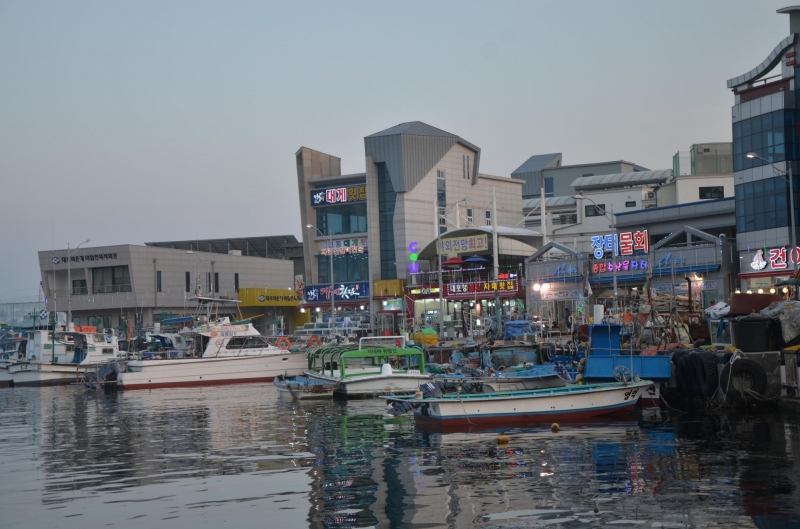
Image credit: Cikgu Pauzi
But before exploring the city and its surrounds, let’s get some sustenance!
Daepohang Port has the best of Sokcho’s local cuisine, including shrimp, sea cucumbers, scallops and a huge range of fish. It has a multitude of seafood restaurants if you enjoy dining with a harbourside view, and a bustling wet market with the freshest catches of the day. Have brunch here and pack some snacks for the afternoon!
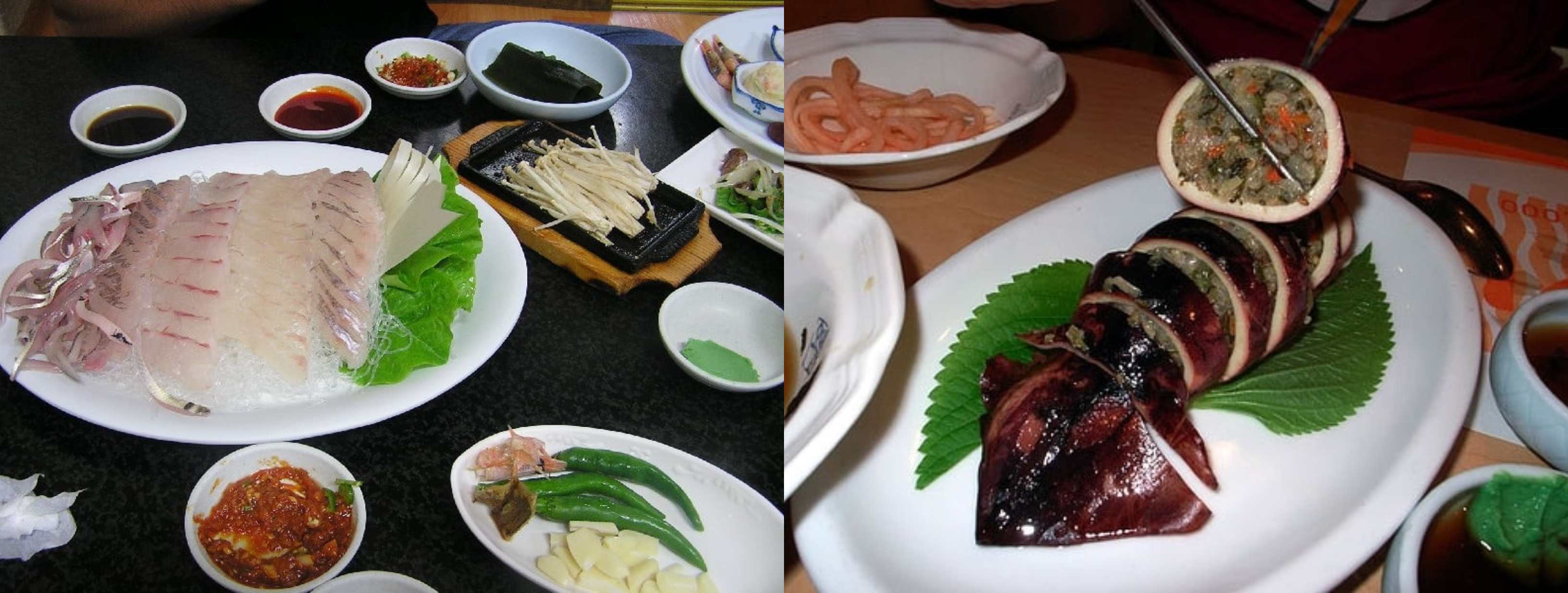
Image credit: Warszk (left, of hweh); superlocal (right, of ojingeo sundae)
Seafood in Korea is prepared differently from other parts of the world and we recommend you try hweh, a chewy form of raw fish and Korea’s delicious answer to sashimi. At Daepohang Port, choose your meal from a tank of live fish, before it’s expertly sliced up and served. Enjoy it with either a spicy-sweet gochujang dipping sauce, or the thicker doenjang made from fermented soybeans.
Ojingeo sundae is another Sokcho regional speciality; it’s similar to the regular Korean sundae (blood sausage, not ice cream), but uses a whole squid instead of pig’s intestines as a case for the stuffing.
Getting there: From Hoenggye, take a bus to Gangneung Intercity Bus Terminal (30 min), then take another bus to Sokcho Intercity Bus Terminal (1h 10min). Take Bus No 1, 1-1, 1-7, 7-1, 9, or 9-1 and get off at Daepohang Port (25 min).
Prices: Seasonal market prices.
Address: 64, Daepohang-gil, Sokcho-si, Gangwon-do
Opening Hours: All year round.
Feel at one with nature at Seoraksan National Park
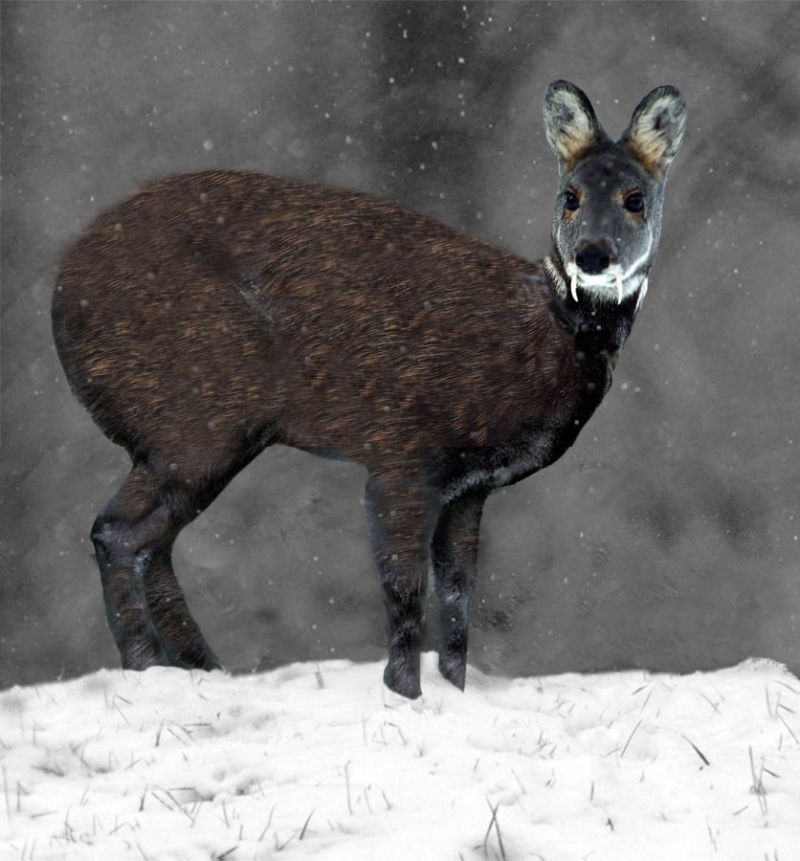
Image credit: ErikAdamsson
Now that you’ve fueled up for the afternoon, you’re ready to begin your afternoon hike through the idyllic trails of Seoraksan National Park. It’s listed as a UNESCO Biosphere Reserve and is home to a plethora of diverse flora and fauna. If you’re lucky, you might spot an endangered musk deer or a Korean goral amongst the pines and elms!
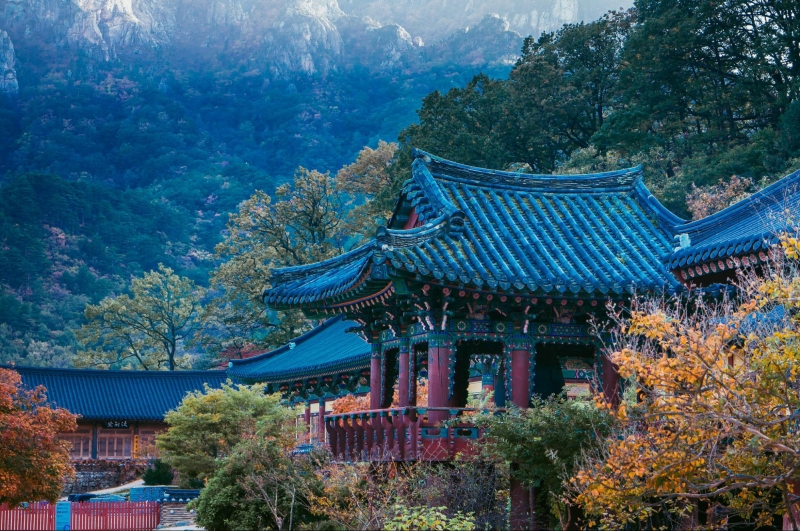
Image credit: Eirien
Look out for the majestic Sinheungsa Temple near the entrance, an ancient Buddhist temple built about 1,500 years ago. It’s also hard to miss the towering 62-foot bronze statue of the Great Unification Buddha, or Tongil Daebul. He’s sitting in quiet meditation with his eyes closed and a small smile on his face, representing the wish of Koreans for the reunification of their divided country.
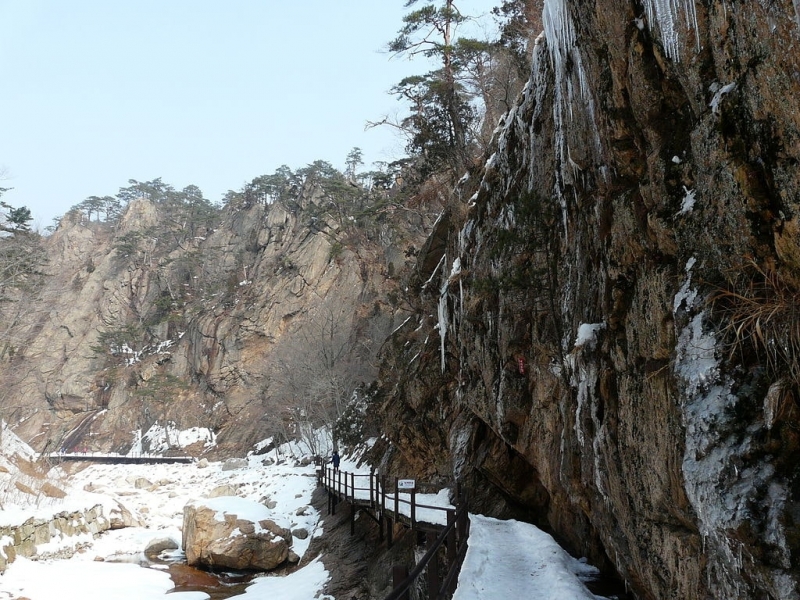
Image credit: Piotrus
There is an assortment of well-maintained trails with different levels of difficulty available for hikers, from half-day routes to a three-day trek to Daecheongbong Peak (the highest peak in the park at 1,708m). If it’s your first time at Seoraksan, stay in the Oeseorak (Outer Seorak) area. It offers lovely vistas from accessible peaks, such as icy waterfalls and formidable rock formations.
The white landscape is truly surreal in winter, with snow-capped mountains and bubbling brooks in the background. There are fewer tourists on the trails too, as compared to the more popular ones, which means you’ll get to try out the trails in relative peace.
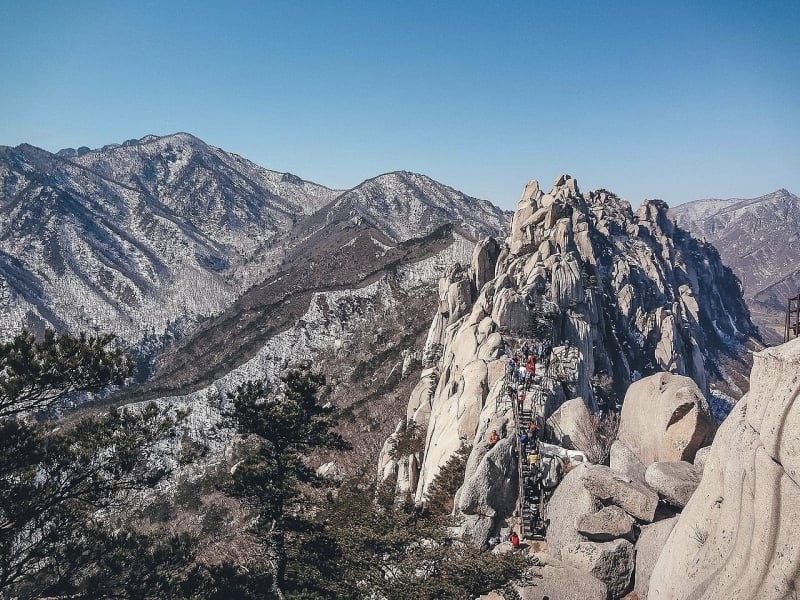
Image credit: Sohyeon Bak, of Ulsanbawi Rock
The gorgeous Ulsanbawi Rock Trail (a 4.5-hour return trail, 7.6km long) brings you through 888 steps to panoramic views from the top of Ulsanbawi Rock. On the way, you’ll pass Heundeulbawi Rock, a large spherical rock that moves back and forth when you push it, and Gyejoam Grotto, a Buddhist temple built into the mountain.
Alternatively, take the cable car to the top of Mount Seoraksan for breathtaking views of the surrounding Oseorak region, downtown Sokcho and the East Sea. From there, it’s a 15-minute hike to the mysterious Gwongeumseong Fortress. Legend tells us that two generals built this to protect their families and friends from war, over a thousand years ago.
Getting there: From Sokcho Intercity Bus Terminal, take Bus No. 7 or 7-1 and alight at Sogongwon Bus Stop (45 min)
Entry fee for Seoraksan National Park: ₩3,500 adults (ages 20+); ₩1,000 middle to high school students (ages 14-19); ₩500 elementary school students (ages 8-13)
Cable car price: ₩10,000 adults (ages 14+); ₩5,000 children (ages 3-13); free admission for children under 3 years
Address: Seoraksan-ro, Sokcho-si, Gangwon-do
Opening Hours: All year round
Website: english.knps.or.kr/Knp/Seoraksan
Ferry yourself over to Abai Village
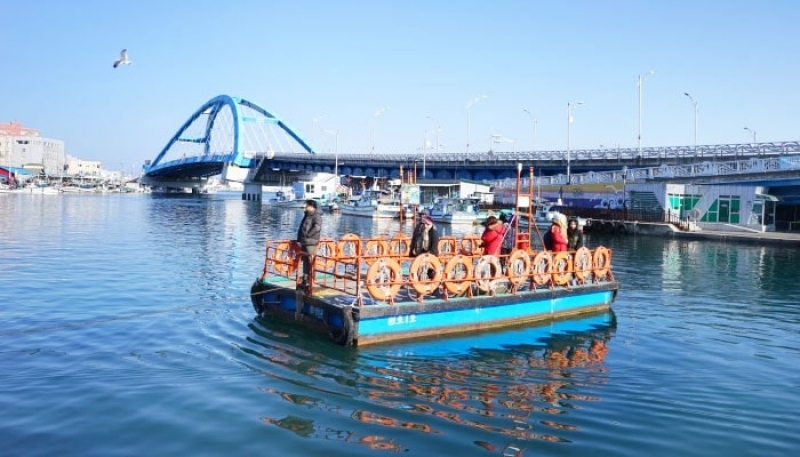
Image credit: Korea Tourism Organization
Return to Sokcho to squeeze in a last stop at Abai Village. The Abai Ferry ride from Sokcho Harbour to Abai Village is only 50 metres long, but it’ll certainly feel like a mile; passengers must pull the ‘Gaetbae’ boat across the harbour themselves using a rope. We hope you brought your friends and family along, because every extra pair of hands helps!
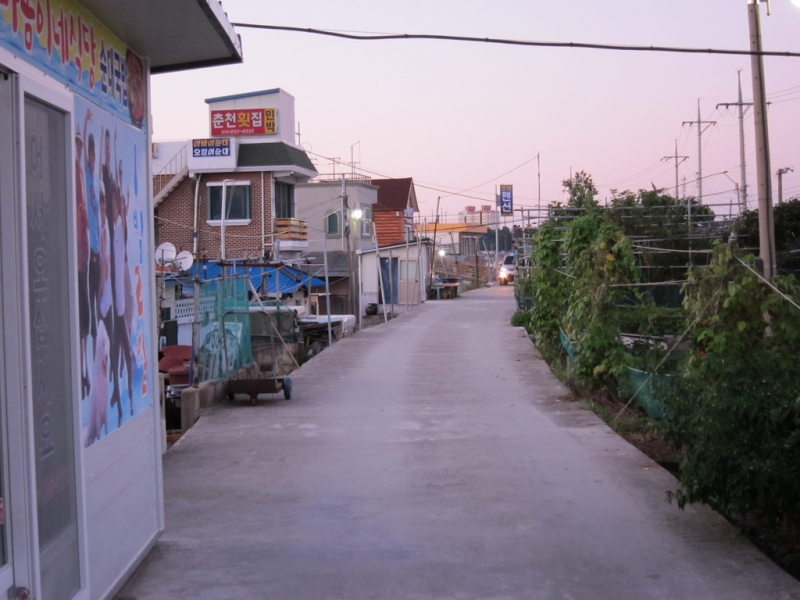
Image credit: Adam Nicholson
Abai Village was a refugee camp for North Koreans fleeing the Korean War, and gets its name from the many elderly refugees who took cover here (the word ‘Abai’ translates into ‘an aged person’ in dialect). The simple layout of the town will transport you to another time, with its low-rise houses, preserved traditions, and cuisine of the northern Abai.
The village is also well-known for being a major filming location for Autumn in My Heart, and fans can relive this popular K-drama by visiting Kim Soon-im’s store in the drama.
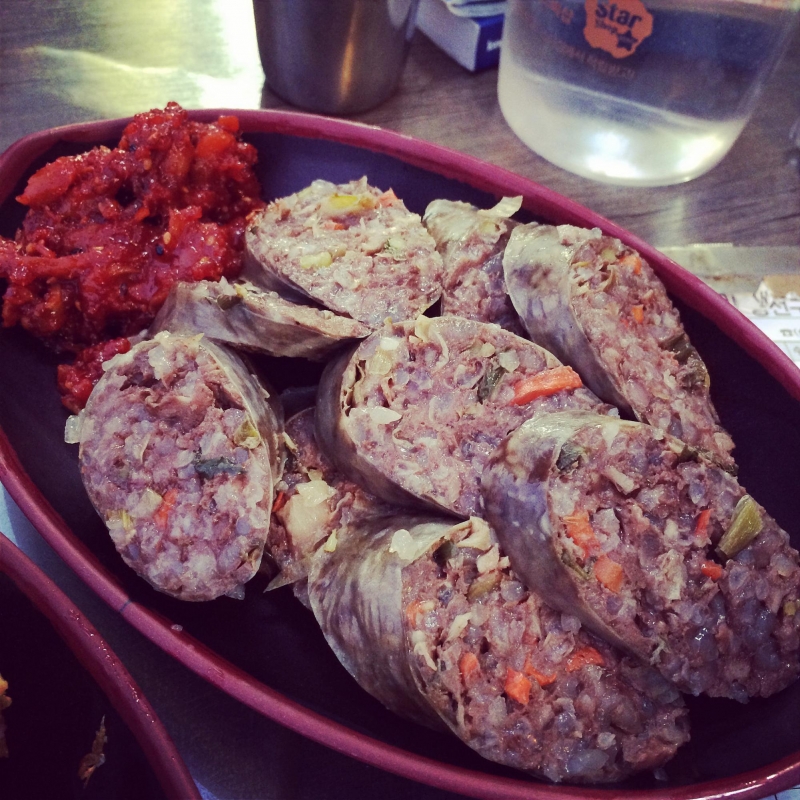
Image credit: Antonio Garcia
Don’t forget to try the special North Korean abai sundae when you visit! It adds an extra twist to Sokcho’s ojingeo sundae, changing the filling to include sticky rice and large intestines, resulting in a much larger roll.
Getting there: From Daepohang Port, take Bus No 1-5 or 12-1 to 송정리입구 (Sokcho Harbour; 11 stops away). The Abai Ferry departs from the end of the harbour.
Entry fee: ₩500 adults; ₩300 children for one-way ticket.
Address: 39, Jungangbudu-gil, Sokcho-si, Gangwon-do (Abai Ferry)
Opening Hours: Ferry runs from 04:30 to 23:00.
Website: www.abai.co.kr
Gangwon and Seoul differ so much in terms of attractions, ambience, and food. Needless to say, Gangwon is the perfect place to retreat into the heart of nature, discover unconventional regional delights and a whole different side to Korea!
For more information on travelling to Gangwon, visit Korea Tourism Organization’s official website and Facebook page.
Brought to you by Korea Tourism Organization (Singapore Office).




